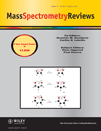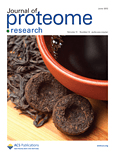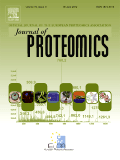
Clinical Proteomics
Scope & Guideline
Exploring the Frontiers of Proteomics in Medicine
Introduction
Aims and Scopes
- Clinical Applications of Proteomics:
The journal focuses on the application of proteomic technologies to discover and validate biomarkers for disease diagnosis, prognosis, and therapeutic monitoring across a variety of conditions, including cancer, cardiovascular diseases, and autoimmune disorders. - Innovative Methodologies:
It emphasizes the development and application of innovative proteomic methodologies, such as mass spectrometry and data-independent acquisition techniques, which enhance the sensitivity and specificity of protein analysis in clinical samples. - Interdisciplinary Research:
The journal encourages interdisciplinary research that combines proteomics with other omics technologies (genomics, transcriptomics, and metabolomics) to provide a comprehensive understanding of disease biology and facilitate personalized medicine. - Biomarker Discovery and Validation:
A significant focus is on the discovery and validation of novel protein biomarkers that can aid in the early detection of diseases, monitor disease progression, and predict treatment responses. - Patient-Centric Studies:
Clinical Proteomics often publishes studies that directly involve patient samples, reflecting real-world clinical scenarios to ensure that findings are applicable and beneficial to patient care.
Trending and Emerging
- Proteomics in Cancer Research:
There is a notable trend in the application of proteomics to cancer research, particularly in understanding tumor heterogeneity, resistance mechanisms, and the identification of novel biomarkers for early detection and targeted therapy. - Integration of Multi-Omics Approaches:
Emerging studies are increasingly integrating proteomics with genomics and metabolomics, allowing for a more comprehensive understanding of biological systems and disease mechanisms, enhancing predictive modeling and personalized medicine. - Machine Learning and Bioinformatics in Proteomics:
The utilization of machine learning and advanced bioinformatics tools to analyze complex proteomic datasets is growing, enabling researchers to uncover patterns that can lead to new insights in disease pathology and treatment responses. - Non-Invasive Biomarker Discovery:
There is a heightened focus on non-invasive proteomic biomarkers derived from bodily fluids (e.g., saliva, urine), which are crucial for developing diagnostic tools that are easier to implement in clinical settings. - COVID-19 Related Proteomics:
The ongoing research related to COVID-19 has led to a surge in publications that explore the proteomic landscape of the virus and its effects on the human body, highlighting the importance of proteomics in understanding infectious diseases.
Declining or Waning
- Basic Research without Clinical Relevance:
Research focusing solely on basic proteomic techniques without direct application to clinical issues has decreased, as there is a growing preference for studies that link proteomics directly to clinical outcomes. - Single Omics Studies:
There has been a decline in publications that focus exclusively on proteomics without integrating other omics approaches, as the trend shifts towards more holistic, multi-omics strategies that provide a more comprehensive view of disease. - Traditional Biomarker Approaches:
The reliance on traditional biomarker discovery approaches, which often do not incorporate advanced proteomic technologies, has waned in favor of more innovative and sophisticated methodologies that offer greater sensitivity and specificity. - Non-Quantitative Proteomics Studies:
The frequency of studies employing qualitative proteomic analyses has decreased, as the field increasingly values quantitative approaches that provide measurable and reproducible results.
Similar Journals

Physiology and Pharmacology
Advancing knowledge in physiology and pharmacology.Physiology and Pharmacology is a distinguished open access journal that has been disseminating high-quality research in the fields of physiology and pharmacology since its inception in 1997. Published by the Iranian Society of Physiology & Pharmacology, this journal offers a platform for scholars and practitioners to share innovative findings and advancements that contribute to the understanding of biological systems and drug action. With its ISSN 2476-5236 and E-ISSN 2476-5244, it ensures global reach and accessibility. The journal is positioned in the third quartile for Linguistics and Language and fourth quartile in both Pharmacology and Physiology categories according to Scopus rankings, reflecting a commitment to expanding knowledge within these interdisciplinary domains. Set within the academic landscape of Iran, the journal aims to bridge regional research with the international community, providing valuable insights into physiological processes and pharmacological developments. In light of its open access model, the Physiology and Pharmacology journal plays a crucial role in enhancing the visibility of research outcomes and fostering collaboration among researchers, professionals, and students on a global scale.

Proteomics Clinical Applications
Bridging Laboratory Discoveries and Patient CareProteomics Clinical Applications, published by Wiley-VCH Verlag GmbH, is a pivotal journal in the realm of Clinical Biochemistry, with an impressive track record since its inception in 2007, continuing its impactful contributions to 2024. With an ISSN of 1862-8346 and an E-ISSN of 1862-8354, this prestigious journal currently holds a commendable Q2 ranking in Clinical Biochemistry, situated at the 54th percentile among its peers within Scopus rankings. Dedicated to the advancement of proteomics and its applications in clinical settings, Proteomics Clinical Applications serves as a bastion for innovative research, fostering knowledge exchange among scientists, healthcare professionals, and students alike. Through its focus on novel methodologies and translational research, the journal aims to bridge the gap between laboratory findings and clinical practice, significantly impacting patient care and outcomes. Although not open access, its content is accessible through various academic databases, ensuring that vital research reaches its intended audience.

Molecular Omics
Exploring the Frontiers of Molecular BiologyMolecular Omics is a premier, peer-reviewed journal published by the Royal Society of Chemistry, focusing on the interdisciplinary field of molecular biology with significant implications for biochemistry and genetics. With an E-ISSN of 2515-4184, this journal has been dedicated to disseminating high-quality research since its inception in 2018, maintaining an impressive trajectory in academic contributions until 2024. Currently, it holds a Q2 quartile ranking in both Biochemistry and Genetics, alongside a Q3 ranking in Molecular Biology for 2023, highlighting its relevance and influence in these domains. The journal is accessible as an open access publication, promoting the widespread dissemination of groundbreaking research. As part of a vibrant academic community, Molecular Omics aims to bridge fundamental and applied science, appealing to researchers, professionals, and students eager to expand their knowledge on molecular mechanisms and technologies that shape the future of biological research.

Expert Review of Proteomics
Advancing Proteomic Insights for a Dynamic Future.Expert Review of Proteomics, published by TAYLOR & FRANCIS LTD, is a distinguished journal that focuses on the latest advancements in the field of proteomics, a critical area within biochemistry and molecular biology. With an ISSN of 1478-9450 and E-ISSN 1744-8387, this journal has been pivotal in disseminating high-quality research from its inception in 2004 to its planned convergence in 2024. Its influential position is reflected in its 2023 rankings, placing it in the Q2 category for both Biochemistry and Molecular Biology, alongside respectable Scopus rankings that rank it 118th and 141st in its respective categories. Despite its non-open access structure, Expert Review of Proteomics provides researchers and professionals with a vital platform for critical reviews and insights into proteomic methodologies, thus contributing significantly to the global scientific community. By bridging theoretical research with practical applications, it serves as an essential resource for those dedicated to advancing their knowledge and expertise in this dynamic field.

Cancer Informatics
Unlocking New Dimensions in Cancer UnderstandingCancer Informatics, published by SAGE PUBLICATIONS LTD, is a leading open-access journal dedicated to the integration of computational techniques and cancer research. Since its inception in 2005, this journal has become a vital resource for researchers, professionals, and students interested in the intersection of informatics and oncology. With an E-ISSN of 1176-9351 and a focus on the innovative application of data analysis in cancer research, Cancer Informatics serves to disseminate critical findings that aid in understanding cancer biology and enhancing treatment modalities. Recognized in the Q3 category for both Cancer Research and Oncology according to the 2023 metrics, it currently holds a Scopus ranking of #246 in Medicine _ Oncology and #172 in Biochemistry, Genetics and Molecular Biology _ Cancer Research, indicating its contribution to ongoing research in these fields. This journal not only supports open access to scientific findings but also aims to foster collaboration among interdisciplinary scholars worldwide, making it an essential platform for advancing the field of cancer informatics through cutting-edge research and innovative methodologies.

Genome Medicine
Pioneering Innovations in Genomic MedicineGenome Medicine is a prestigious, peer-reviewed journal published by BMC, focusing on the rapidly evolving fields of genetics, molecular biology, and molecular medicine. Established in 2009 and boasting an open-access format, it has become a leading platform for disseminating high-quality research findings that advance our understanding of genetic diseases and therapeutic innovations. With an impressive Q1 ranking across multiple relevant categories—in particular, genetics (clinical), molecular biology, and molecular medicine—this journal is recognized for its substantial impact in the academic community, as evidenced by its exceptional placement in Scopus rankings. By providing unrestricted access to groundbreaking studies, Genome Medicine fosters collaboration and knowledge sharing among researchers, clinicians, and educators, thus playing a vital role in the transition from fundamental genetic research to clinical applications. Researchers are encouraged to contribute their findings and insights, further solidifying the journal’s position as a pivotal resource for those dedicated to advancing genomic medicine.

MASS SPECTROMETRY REVIEWS
Transforming Knowledge in Mass SpectrometryMASS SPECTROMETRY REVIEWS, published by Wiley, is a premier academic journal dedicated to advancing the field of mass spectrometry and its applications across a multitude of scientific disciplines. With an ISSN of 0277-7037 and an E-ISSN of 1098-2787, the journal has established itself as a vital resource within the realms of Analytical Chemistry, Biochemistry, Genetics, Condensed Matter Physics, and Spectroscopy, achieving Q1 status across these categories in 2023. As a testament to its significant contribution to scholarly research, it boasts impressive Scopus rankings, including a rank of #2 out of 76 in Chemistry - Spectroscopy and #4 out of 156 in Chemistry - Analytical Chemistry, placing it in the 97th percentile and above. Emphasizing high-quality, peer-reviewed research, MASS SPECTROMETRY REVIEWS serves as an essential platform for researchers, professionals, and students aiming to stay abreast of cutting-edge developments and methodologies in mass spectrometry. The journal is committed to fostering a deeper understanding of mass spectrometric techniques while also contributing to interdisciplinary advancements, making it a valuable addition to any academic library. Authors seeking to disseminate their work in a journal with a strong reputation and impact in the scientific community will find MASS SPECTROMETRY REVIEWS an ideal venue.

Cancer Genomics & Proteomics
Advancing cancer research through genomics and proteomics.Cancer Genomics & Proteomics is a pivotal journal published by the International Institute of Anticancer Research, dedicated to advancing the fields of cancer genomics and proteomics. Established in 2004 and running until 2024, this journal provides a vital platform for the dissemination of high-quality research that explores genetic and protein interactions in cancer, thereby fostering innovations in diagnostics and therapeutics. The journal boasts a commendable Q2 ranking in Biochemistry and Genetics and is recognized in the Q3 tier for its contributions to Cancer Research and Molecular Biology, reflecting its growing impact in these dynamic fields. Operating out of Greece, it engages a diverse audience, including researchers, clinicians, and students, by sharing significant findings and methodological advancements in the realm of cancer studies. While currently not an open-access publication, Cancer Genomics & Proteomics remains committed to enriching scientific dialogue and collaboration with its insightful articles and reviews.

JOURNAL OF PROTEOME RESEARCH
Driving Innovation in Biochemistry ResearchJOURNAL OF PROTEOME RESEARCH is a premier publication in the field of proteomics, disseminating cutting-edge research and methodologies that drive advancements in biochemistry and molecular biology. Published by the American Chemical Society, this esteemed journal boasts a robust impact, as evidenced by its Q1 rankings in both Biochemistry and miscellaneous Chemistry categories for 2023. With a reputation bolstered by a solid Scopus ranking—#64 out of 408 in General Chemistry and #80 out of 438 in Biochemistry—the journal serves as an essential resource for researchers, professionals, and students aiming to deepen their understanding of protein functions and interactions in biological systems. Although it does not operate under an open-access model, the JOURNAL OF PROTEOME RESEARCH remains a critical platform for scholarly discourse, committed to publishing high-quality, peer-reviewed articles through 2024 and beyond. Scholars are encouraged to engage with the pioneering studies and reviews that shape the future of proteomics.

Journal of Proteomics
Transforming research with cutting-edge proteomic insights.Journal of Proteomics, published by Elsevier, is an esteemed peer-reviewed journal dedicated to advancing research in the field of proteomics, with broad implications for biochemistry and biophysics. Established in 2008, the journal has continuously evolved, embracing innovative methodologies and technologies that facilitate protein analysis from a variety of biological systems. With its current standing in the Q2 category for both biochemistry and biophysics as of 2023, it is recognized as a significant contributor to scientific literature. The journal publishes original research articles, reviews, and methodological advancements, providing invaluable insights for researchers, professionals, and students alike. Although it does not offer open access, the journal remains a crucial platform for disseminating knowledge that informs various applications, ranging from drug development to disease understanding. As it converges towards 2024, the Journal of Proteomics continues to solidify its role in shaping the future of proteomic research through rigorous scientific inquiry and innovation.